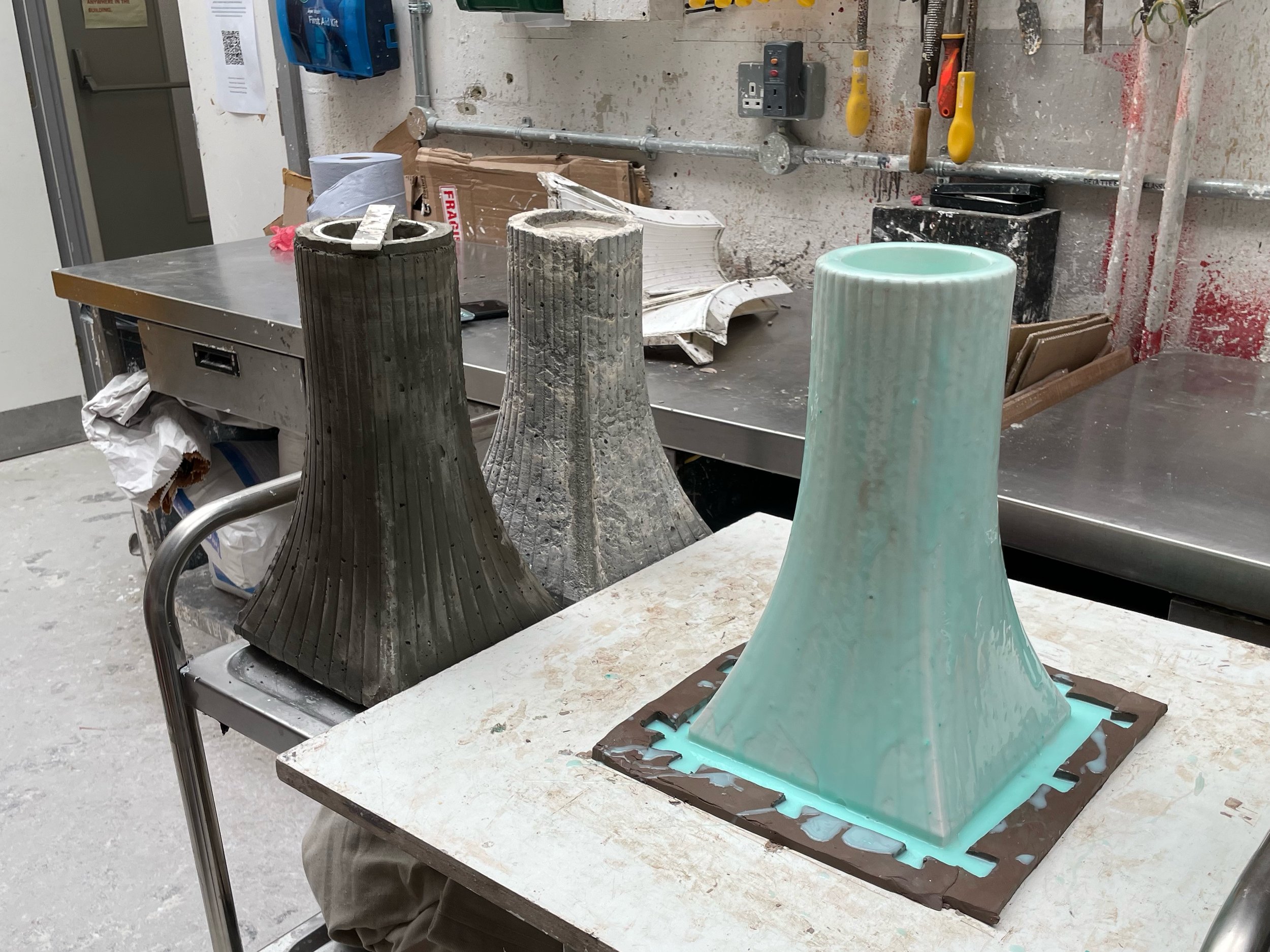Final Show IV
I eventually managed to create two sets of 3D-printed moulds, despite encountering various problems along the way. At the time, I thought I could finish my work on schedule if everything went smoothly, and I even believed I might exceed my original plan.
However, I faced a major setback during the concrete casting process: the mould broke. I had not anticipated this at all. These two sets of moulds were made from different materials—one from PLA and the other from PETG. Due to PLA’s low flexibility and the high density of the concrete, the mould inevitably cracked at the bottom when I poured the concrete. In contrast, the PETG mould handled the heavy material much better.
I didn’t have the time to print another set of moulds, and doing so would have been prohibitively expensive. Fortunately, I had cast a plaster model before the mould broke, which I could use to create a silicon and plaster jacket mould. However, I knew this would take a significant amount of time to complete.
Given the size and complexity of the model, it took me more than a week to make the silicon mould. Despite the delays, I gained valuable experience and learned many new techniques for mould making during this process. Compared to the 3D-printed mould, the silicon plaster jacket mould required a different approach to casting. Instead of pouring the concrete from the top, I had to pour it from the bottom. To achieve this, I created a large component to hollow out the centre of the model, which had to be carefully inserted into the mould after pouring the concrete. However, I failed to add a slot to secure its position, meaning I had to align it manually each time I cast a model.
I tested the jacket mould with plaster, and it performed very well. It captured finer details compared to the 3D-printed mould and produced fewer bubbles on the surface of the cast model. However, new issues emerged when casting concrete. The pressure exerted by the concrete distorted the shape of the silicon mould, making it difficult to maintain its original form. Additionally, inserting the hollowing component after pouring the concrete was both challenging and imprecise, leading to significant variation in the alignment of each model.
Despite these challenges, I used both moulds to cast several concrete models. The differences between the two moulds are immediately visible in the texture of the finished pieces. This distinction adds an interesting dimension to the work. Although all the models are based on the same original shape and were cast in similar ways, they exhibit different forms and visual effects.




